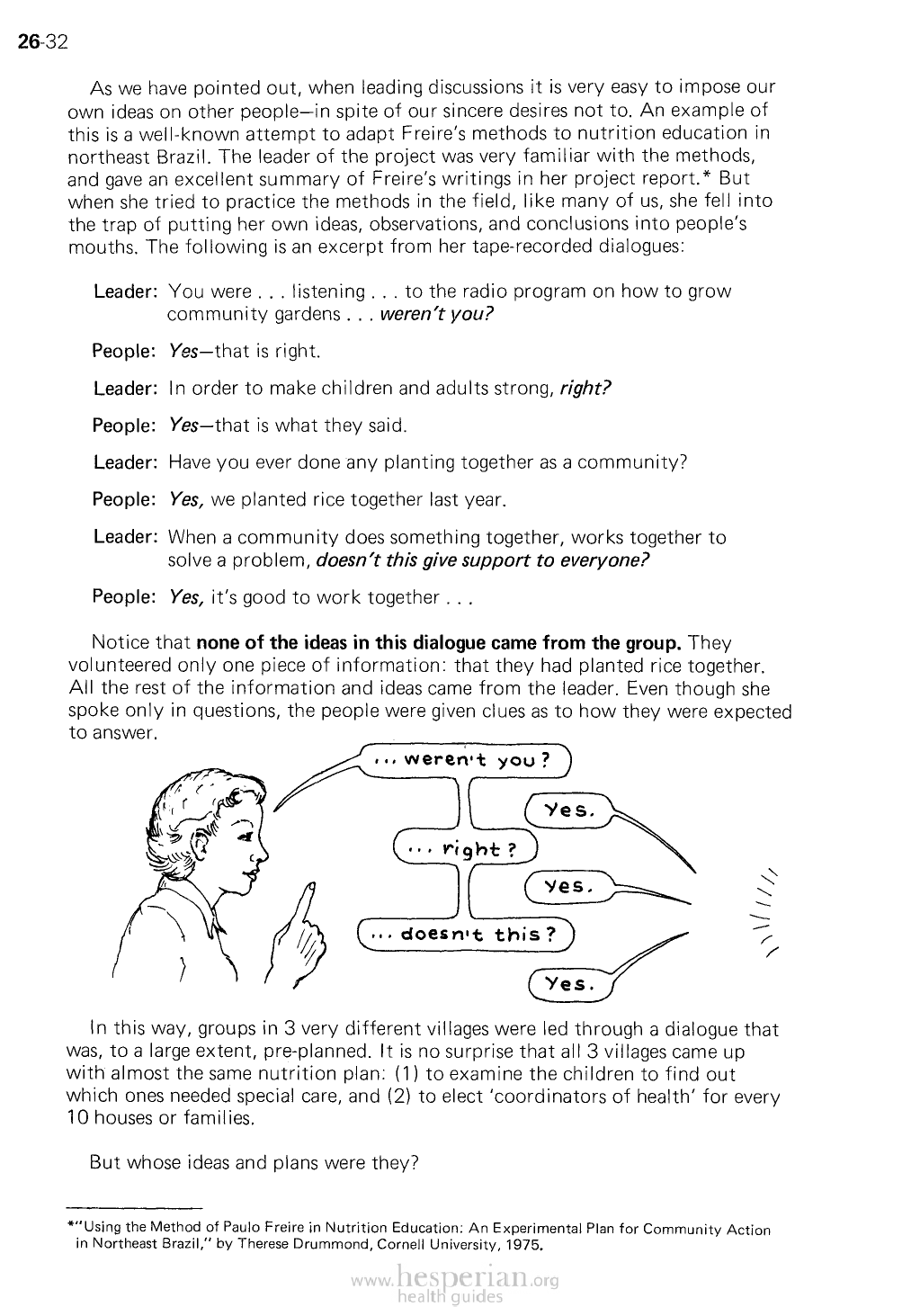
26-32
As we have pointed out, when leading discussions it is very easy to impose our
own ideas on other people—in spite of our sincere desires not to. An example of
this is a well-known attempt to adapt Freire’s methods to nutrition education in
northeast Brazil. The leader of the project was very familiar with the methods, and
gave an excellent summary of Freire’s writings in her project report.* But when
she tried to practice the methods in the field, like many of us, she fell into the trap
of putting her own ideas, observations, and conclusions into people’s mouths. The
following is an excerpt from her tape-recorded dialogues:
Leader: You were . . . listening ... to the radio program on how to grow
community gardens . . . weren’t you?
People: Yes—that is right.
Leader: In order to make children and adults strong, right?
People: Yes-that is what they said.
Leader: Have you ever done any planting together as a community?
People: Yes, we planted rice together last year.
Leader: When a community does something together, works together to solve a
problem, doesn’t this give support to everyone?
People: Yes, it’s good to work together.. .
Notice that none of the ideas in this dialogue came from the group. They
volunteered only one piece of information: that they had planted rice together. All
the rest of the information and ideas came from the leader. Even though she spoke
only in questions, the people were given clues as to how they were expected to
answer.
In this way, groups in 3 very different villages were led through a dialogue that
was, to a large extent, pre-planned. It is no surprise that all 3 villages came up with
almost the same nutrition plan: (1} to examine the children to find out which ones
needed special care, and (2) to elect ‘coordinators of health’ for every 10 houses or
families.
But whose ideas and plans were they?
*”Using the Method of Paulo Freire in Nutrition Education: An Experimental Plan (or Community Action
in Northeast Brazil,” by Theresa Gourmand. Cornall University. 1975,